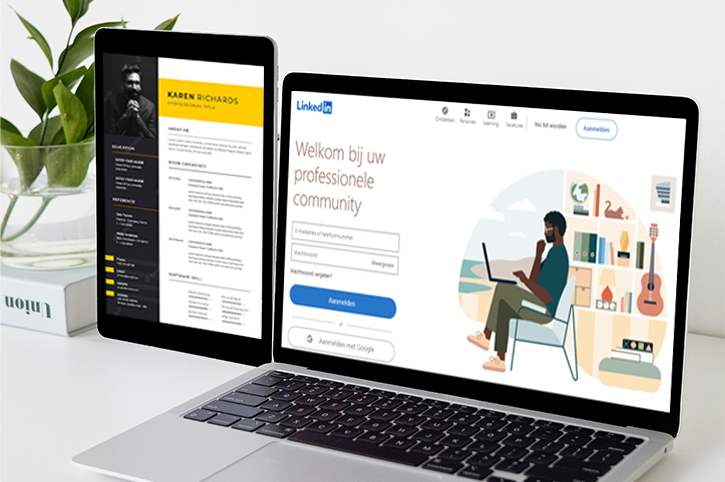
What do you actually put on your resume or LinkedIn profile these days? Digitally promoting yourself is a difficult task for many people. It quickly feels over the top or uncomfortable. It's really a profession in itself to make your own personal brands to find or to job marketing to do. So we are happy to help you! In this article we give you 5 practical tips, but also 5 absolute tips don'ts for a good resume and LinkedIn profile.
If you don't receive our newsletter yet, sign up quickly!
Today's CVs: personal and findable
The CV is no longer just a factual summary of work experience and education(s). It is also important that you present yourself as a person. Who are you, what do you find important and what do you want to convey to your future employer?
That is why it is becoming more and more common to put a personal introduction of 3-4 lines on your CV. On LinkedIn you can put this under the heading 'Info'. In this you explain what you have done, but also what competencies you have. What makes you unique? It is useful to use certain keywords. You can find this, for example, in the vacancy text. Recruiters can find you better on LinkedIn or on a job site if you post your resume there.
Think like a recruiter
You put your competencies – also called skills, skills or characteristics – not only in your personal introduction, but also on your CV and LinkedIn. The labor market is currently extremely tight. Never before have there been so many vacancies, while few people are looking for work. As a result, there is a huge mismatch in the labor market. Because the requirements set by employers do not match the qualifications of job seekers. Many organizations are therefore adjusting their hiring policy and looking for applicants with specific competencies. It is therefore smart to mention them: on your resume, but also on LinkedIn under the heading 'Skills'.
Five practical tips
- A (business) profile picture. Your future employer simply wants to get an impression of you as a person. Are you also looking for images of your new employer?
- Work experience? Keep it short and sweet! Look for what makes your work different or specific and don't name the standard tasks:
Don't: Do administrative acts.
Do: Processing about 8-10 personnel files per day in the system. - Use numbers to back up your experience. It is quite different whether you were managing a team of 3 or 50 employees.
- List of competencies (skills, skills or traits). Be distinctive and specific in this. There are few people who did not eager to learn, so what does this mean to you? Or be flexible, something like that. Does this mean that you want to work in the evenings, that you can quickly adapt to changes or that you are good at yoga?
- Use bullet points for bullet points. The human eye is simply drawn to lists. Make use of that.
Five absolute don'ts
- From old to new. LinkedIn does this for you automatically, but you can also imagine the work experience on your resume from new to old. Your most recent work experience will therefore be at the top.
- Work experience older than ±10 years. Were you a stock filler in 2001? Ask yourself if this is relevant for your future employer. Tip: use 'various jobs' and list the less important work experience. That way you don't leave a gap on your resume.
- More than 2 pages. We live in a time where everything is getting faster. Selectors and recruiters often also have an attention span of less than 10 seconds… So limit yourself to a maximum of 2 pages.
- Marital status, place of birth, full address, date of birth. A resume, but also LinkedIn, is becoming more and more anonymous. Your place of residence is sufficient. Of course you do mention contact details.
- Spelling mistakes. Give yourself a flawless first impression. Have someone else check your resume and LinkedIn profile
Then something else…
Mention references on a resume? This is only common in a few sectors, such as healthcare and education. In other cases it is better to put references on LinkedIn, under the heading 'Recommendations'. Let your manager, colleague or customer write a positive recommendation. And then list your LinkedIn profile on your resume.
Good luck with your resume or LinkedIn profile! Do you still need help with this? You may be able to apply for a through your current employer career check to request. In this we help you to take the right step in your career and your resume and LinkedIn are also discussed.
Want to know more?
Do you have questions about this article? Feel free to contact our Service Center. We can be reached every working day from 8.00 a.m. to 18.00 p.m. via sc@unie.nl and 0345 851 963.



